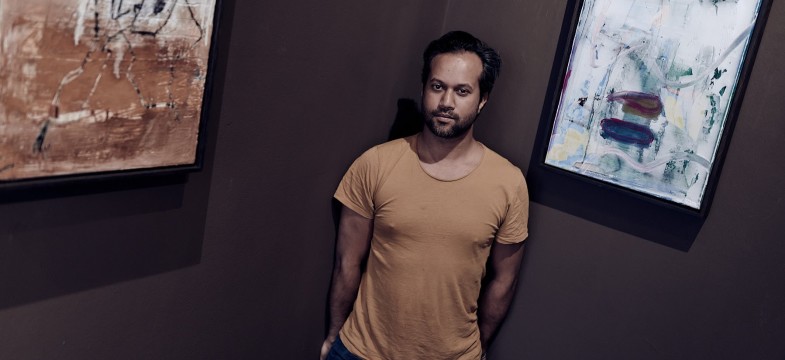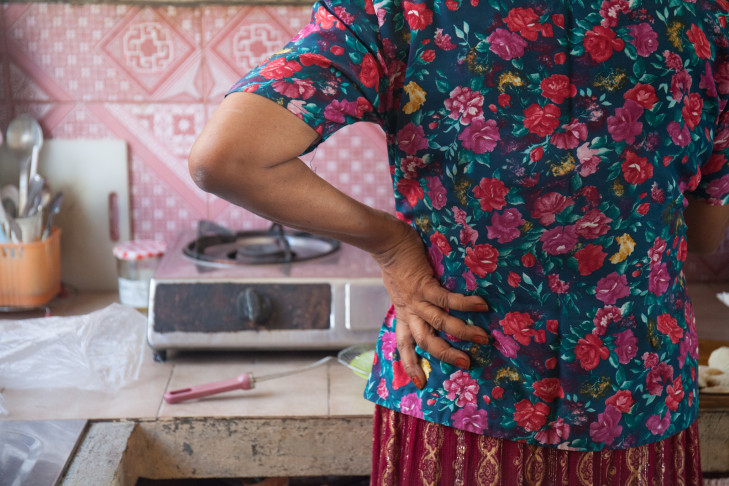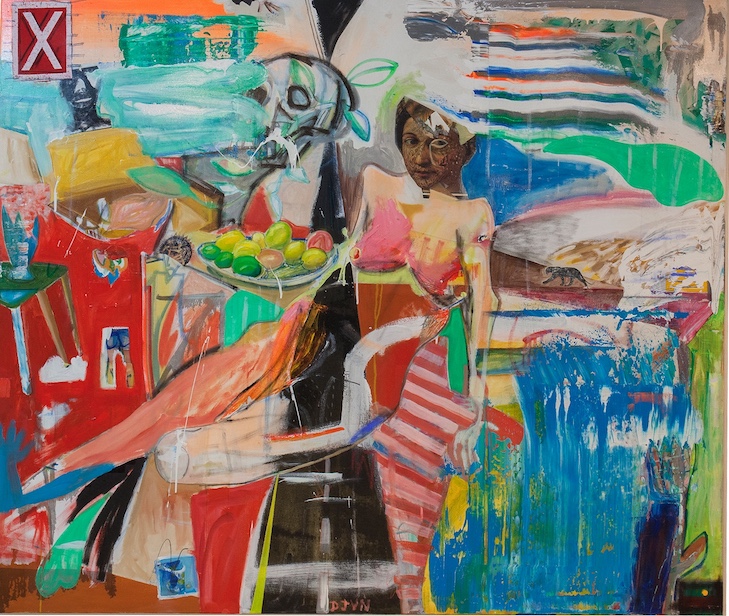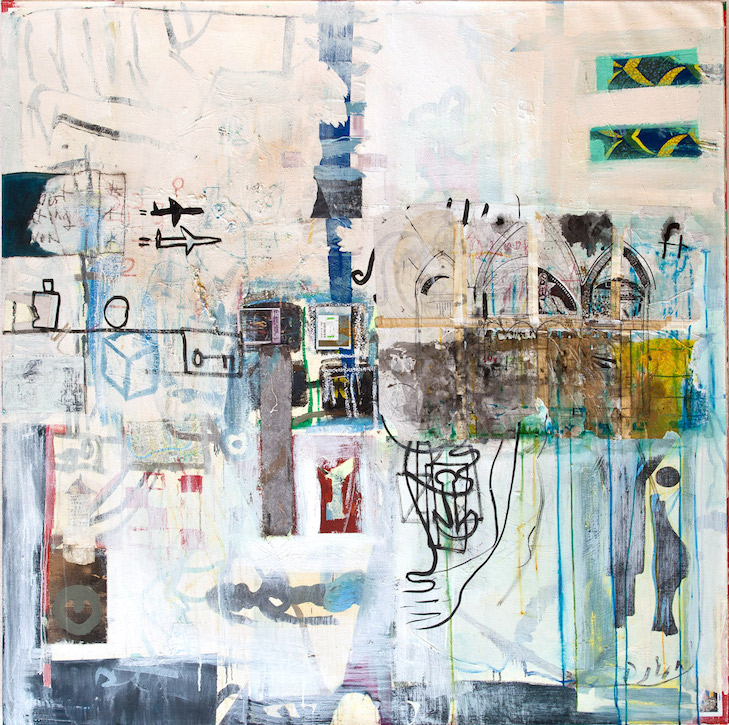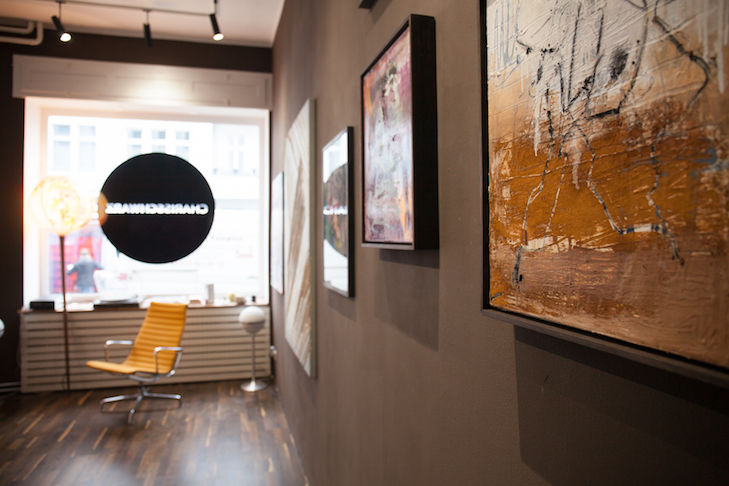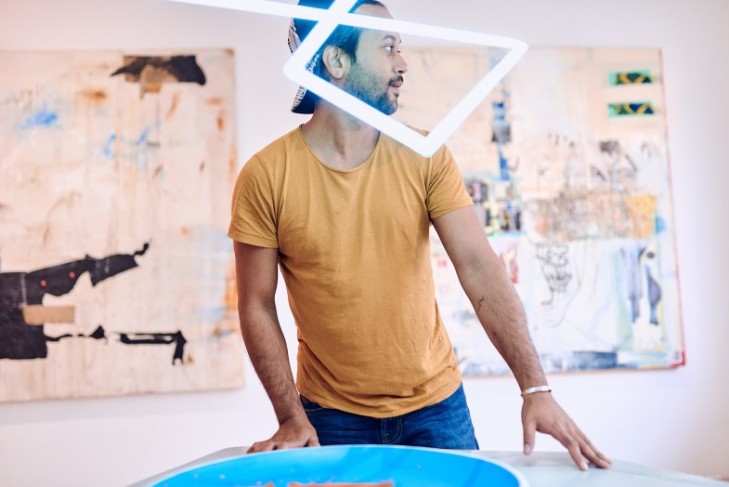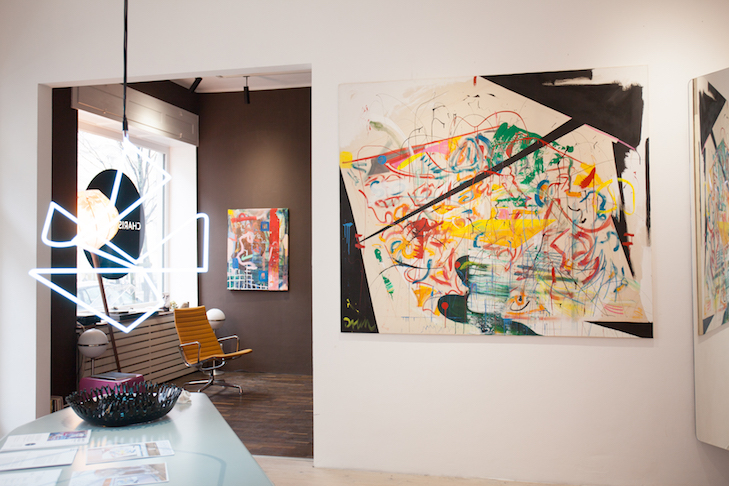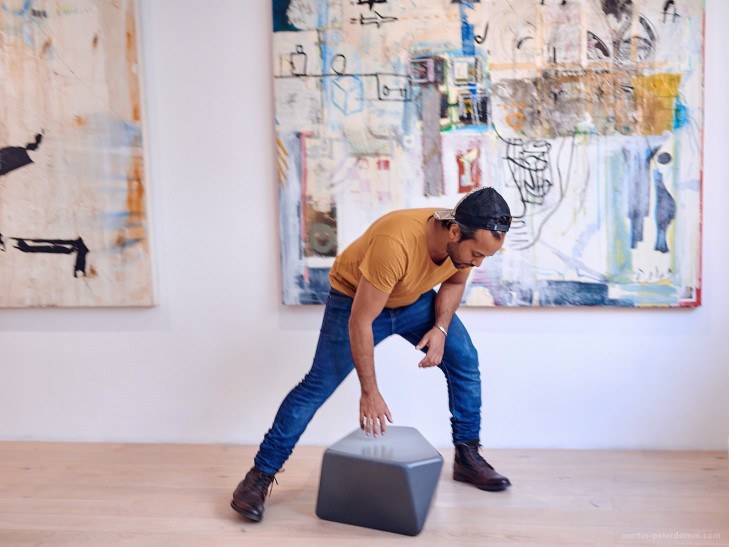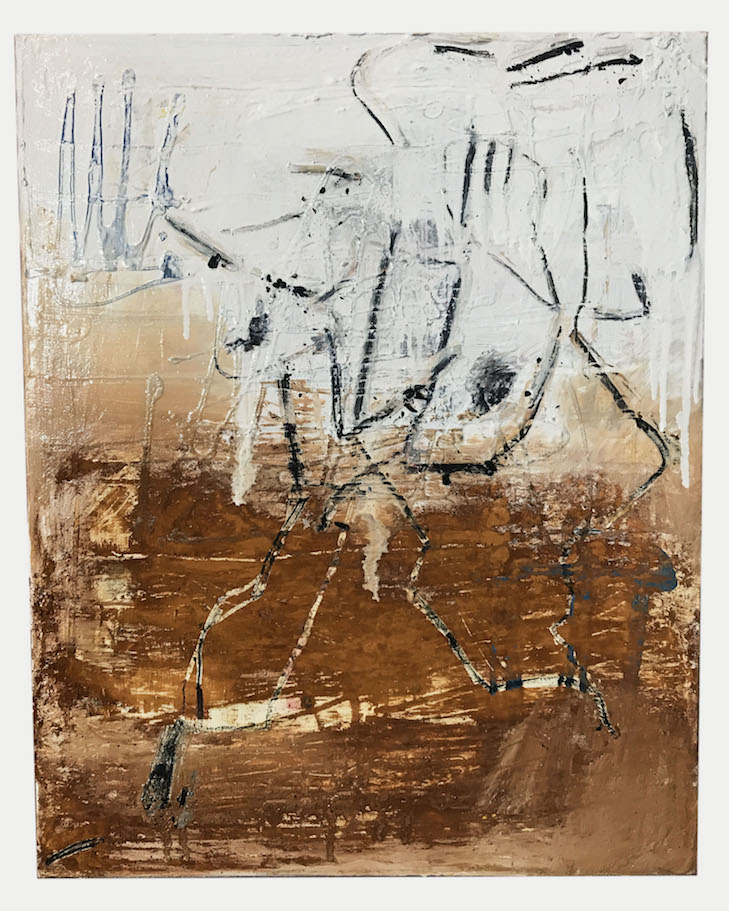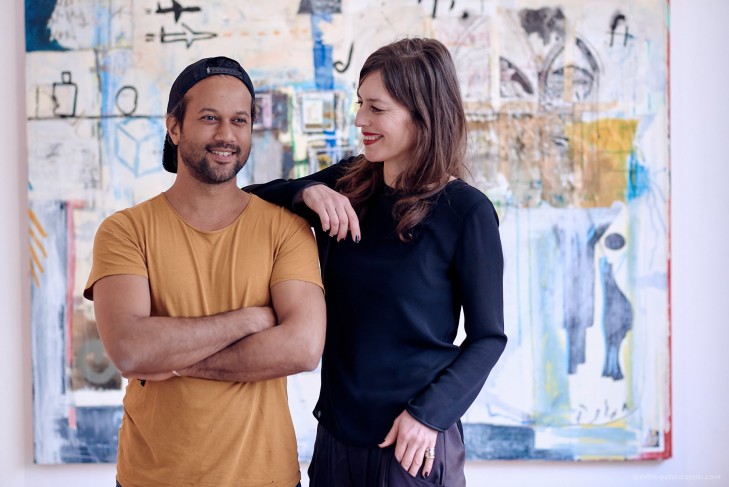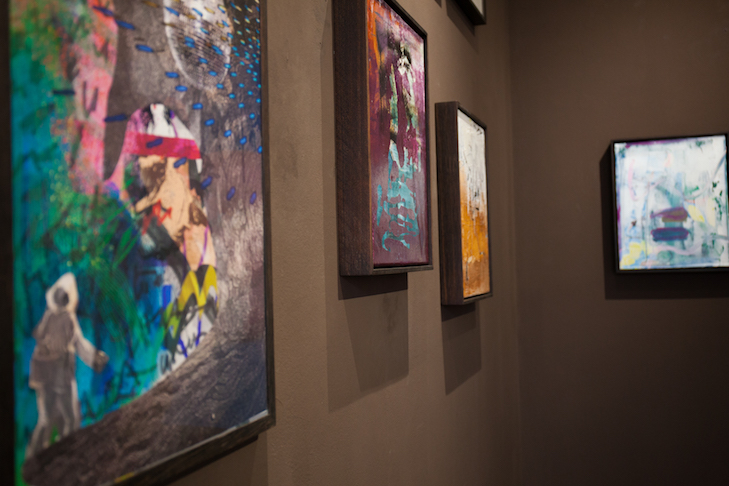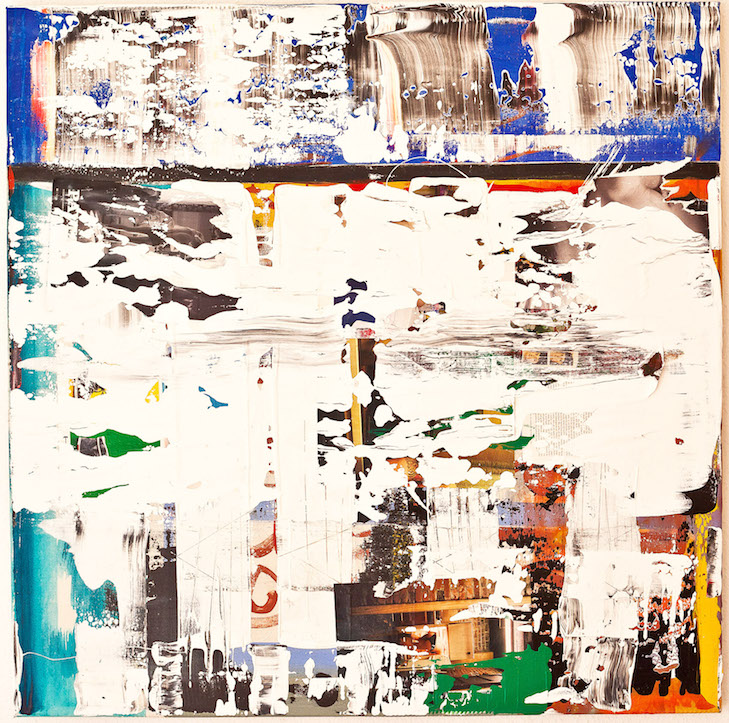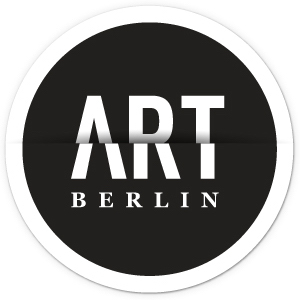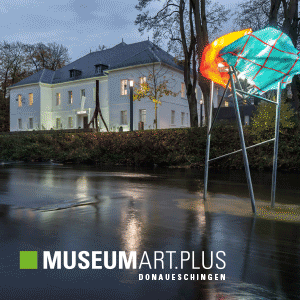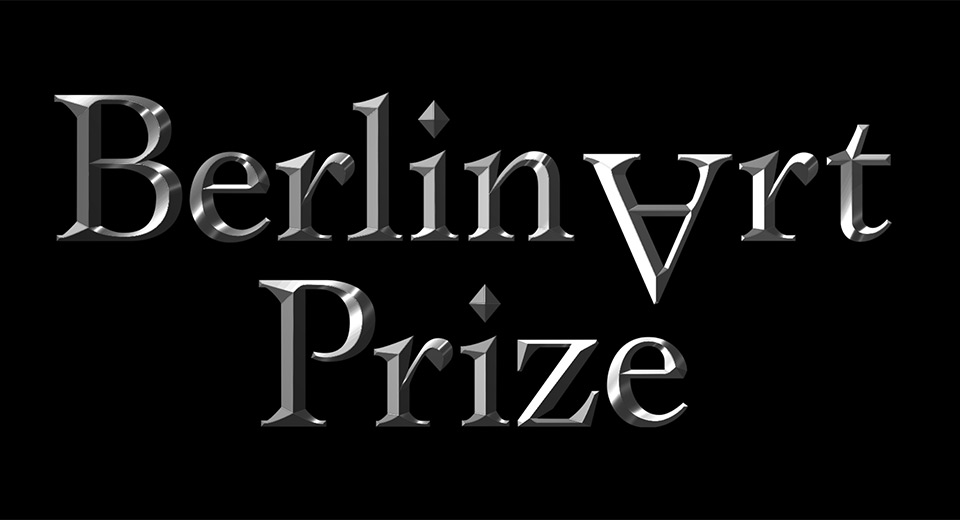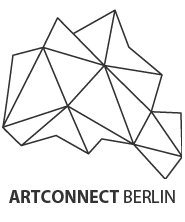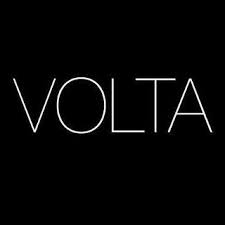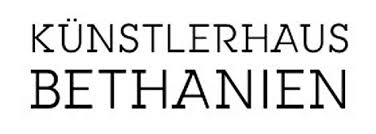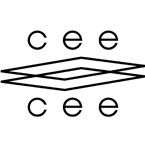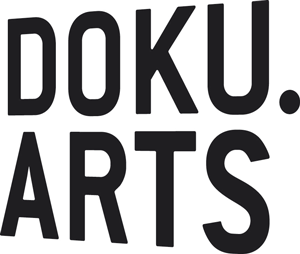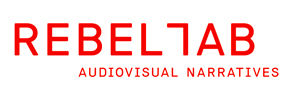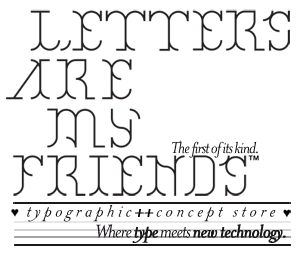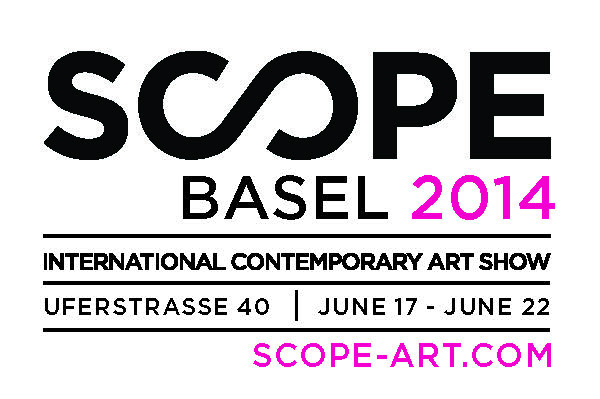
Travelogy, 2008, sand, glue, gesso, wood, fabric, paper, pigment and spray paint on canvas, 183 x 183 cm
Is there a certain first memory or situation that triggered your wish of expressing yourself in this environment or the wish to create a visual message?
Patterns on the curtain. My grandmothers were seamstresses and they designed clothes as well as interior design fabrics. They would take me to the fabric stores when I was very young: I remember how my small body would wander through the forest of fabric rolls and piles. I touched them, felt them, smelt them. The colors, patterns and textures emanating from this universe is what awoke in me an aesthetic and design consciousness. There was hardly any sort of art education in schools. I eventually designed my own garments and presented a collection with high school friends in nairobi within a theatrical choreography.
If you would express Mauritius typical feel as a local in a few symbols which would they be?
Loud and nasty public buses, drinking coconut water out of a coconut, ‘Roti’ ( it’s a staple street food- a flour flat bread served hot in newsprint paper with salsa and curry), the majestic mountains that rise out of the land as gods, the long gated walls of the luxury hotels, the smell and sounds of local farmers market, the paille en queue in the sky ( a bird that always looks like the most graceful drawing), the colorful religious celebrations of the hindus, flowering sugar cane fields, volcanic sunsets, the island viewed from the sea.
How did you develop your own language in this environment?
All the textbooks were in English, the teachers taught mostly in French and at home we spoke Mauritian Creole ( Kreol Morisyen) . Besides the oral aspects, the visual languages we were exposed to came mostly through sign painters and a mish-mash pastiche of crazy architecture. I became interested in calligraphy at an early age and an amateur friend of my parents gave me some lessons. I learned photo -realistic still life watercolor painting with another family friend. But i quickly got bored of this art of illusion- I was more drawn to expressionism.
My dad is a botanist and he constantly took photos of plants- like close-ups mostly- and would have slide projection shows of these at home when we had guests over. He gave me my first camera and later a video camera- I was working mostly with this medium before I got to drawing and painting. My mum gave me a dry pastel set when I was fourteen and i started illustrating Radiohead songs. When we moved to kenya, I was 16 and I illustrated a scene from Macbeth ( a production of which I also acted in) on a piece of cardboard with collage, paint and some of my own blood. It was for English class, and my friends then pretty much convinced me that I should take it a step further. As I mentioned before, in Mauritius there was hardly any art education in early childhood and primary years. It started way too late in Grade 6 and by Grade 9 it became optional.
I remember the only interesting painting I ever saw in my childhood was a crying woman from Picasso in a Larousse french dictionary. I had never seen something of the sort and it struck me.
Years later while I was already in art school and acquainted with art history, i came back to my grandmother’s kitchen and found out that the poster of some fruits in a basket on a table was actually a reproduction of one of Cezanne’s painting. It had been there all along. My whole life. Then, on top of this, my grandmother told me that the other paintings on glass of other still lifes hanging in her living room was actually hers. She had just never mentioned it before.
So yeah, there was no real formal or conscious development of a visual language in those years, but nature, food and textures – which are all part of the landscape.
Tell us about the Biennial – how important was that for your work?
I don’t think it had a major impact on my work right away. Of course, it was a terrific honor to be one of the artists participating in the first ever national pavilion. I was incredibly proud for Mauritius and equally not surprised of the Mauritian government’s lack of support ( they refused to support the project financially and donated 1 airline ticket after the local press exerted some pressure). The Pavilion was supported by fundraising efforts and European galleries who showed their artists. Overall, I hope that next editions of the Mauritius Pavilion could be entirely dedicated to local artists and issues.
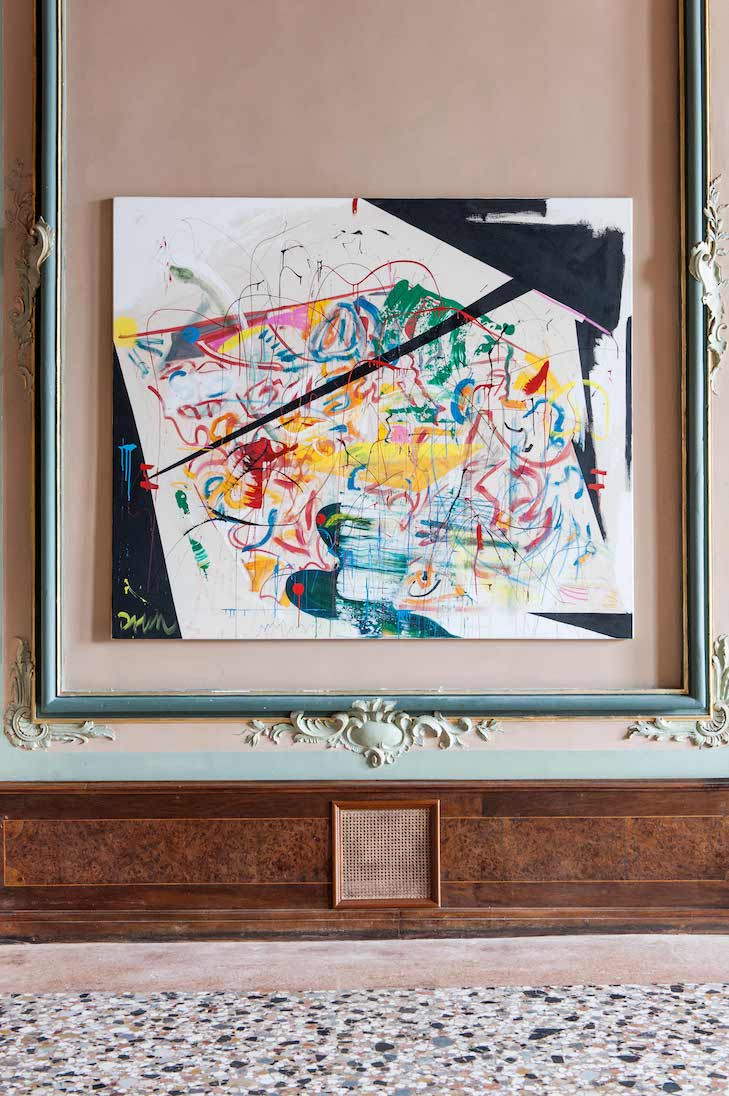
Let there be love, let there be blood, Acrylic, oil and chalk on canvas, 100 x 150 cm, 2015 Mauritius Pavillon
Personally, I found that the concept of a conversation between Mauritian and Western artists would have been improved if there had actually been one- but I also understand that due to the pressure of organizing such a show there was less time and resources for the curators to focus more on this aspect. Krishna and Olga were the only two artist-curators who managed to create an inter-cultural collaboration which resonated beautifully, so I can only imagine the richness of the works had this been more widely possible. It was a learning experience as to how this facet of the Art World works, and I did enjoy Okwui and Michael’s Giardini show.
To be perfectly honest, I realise the status boost it gives to an artist’s reputation- that being said, I wasn’t even working with a gallery at the time and then, bam, I was at the Biennale. I sort of thought I would receive more attention from European or Berlin galleries as a result- I had a big desire to show my whole body of work- but that didn’t happen either and nobody seemed interested. I think this is starting to change now and I hope to find a kindred spirit to work with in the longer term.
Going back to the pavilion of mauritius, I already have some ideas of what to do if i could fill the whole pavilion with an installation- I won’t say much but it does involve a beach!
Maybe I’ll get to do it one day before I die and I’d love to make it in collaboration with some other Mauritian artists in the likes of Gael Froget and others of my generation who deserve as much as I did to be part of the Pavilion. Overall, being part of the Bienniale gave me a deeper understanding of what can be done and broadened my perspective on contemporary art’s possibilities.
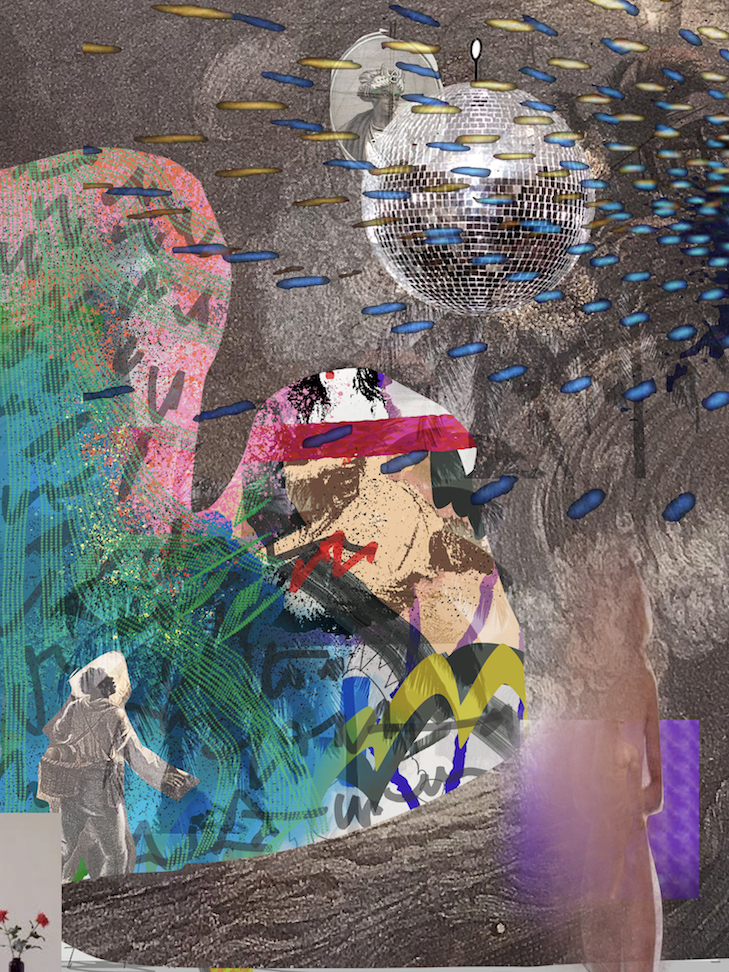
Luxe, Calme et Volupté, 2018, Composition 2, Inkjet Print on UV Resistant 180 g paper, glass, smoked oak wood frame, 48 x 63 cm
You founded a social art program in Nairobi? Please tell us about that.
I was so bored of art school crits and the white cubicle studio.
Collective mental masturbation has it’s limits.
I wanted to connect with a more immediate reality. I had lived in nairobi, did my last two years of high school there and it was also the place where I asserted the fact that I would firmly go towards a sort of creative career. I wasn’t sure whether it would be film, writing, fashion or fine art at the time. A friend of my mum had started working with a small group of street children around the area where we used to live on Ngong Road and I was able to get a grant through Tufts University to start a drawing and collage curriculum with the idea that these children must have stories to tell, that art is also therapeutic and I was simply curious how they approached line, color, form.
I named the project Unmasking Shadows. My younger brother and a Mexican artist Paola Rascon who I met there joined me for a summer and we would just draw and collage with them outdoors every morning under the thatched roof of a kiosk in the Parish of Notre Dame of Guadalupe. There was this Jean Michel Basquiat bible always laying around as I was really into him that year and now that I think of it, it’s funny how I was bringing an afro-influenced artist back to the heartland and seeing what these kids would find in him.
Besides many drawings and collages we also made a street art piece on the facade of a mall with about 30 street children- this was the highlight as it helped open up the negative perception the locals had of them as beggars, drug addicts and loiterers. You just had to give them a brush and some paint, and their community was suddenly so proud of them. Of course, it’s not that simple but the effect was there. We also had an exhibition of their work in Nairobi’s most popular mall The Village Market, and the kids loved it to be at their show and getting interviewed by the media.
I did one more summer of the program in 2006 with 10 international artists whom I invited to collaborate with. With the help of some of them, some of the older kids who were in the program continued the basic idea of Unmasking Shadows, which is using art for social change, and set up their own quarters in the Kibera Slum and naming it Kings of Kibera. They still operate to this day and artists from around the world occasionally do workshops there.
I get the feel that perception plays a big role, to really „see“ what is there, is that correct?
I noticed how living with a painting radically changes the nature of the viewing experience- glancing or even spending an hour in front of an artwork is nothing compared to living with it and continually discovering new messages, emotions and poetry within the painting. Living in a world full of constant visual diversity would seem to make one more visually literate in forming ideas based on a first impression. However, we often get stuck in our perception with internal images that we project of a situation, reality or person based on fashion, class, color, language etc., and we fail to arrive to a real human connection. It’s like when you would see a Michelin chef devouring cheap tacos at a local joint, there is something magnificently human which speaks to the creative spirit in that act.
For me, with painting, this comes around in the reenactment of different mental states and visual languages, in the process of erasing, covering and revealing, so that a complexity which is a more accurate version of truth can be approached. Then, sometimes, I might paint over the whole thing again with black, or white or another solid color but that color is no longer just that color.
In appearance it may be, but it’s feeling is changed.
What are your plans for this year?
I’m currently working on a series entitled Luxe, Calme et Volupté which I see both as a homage to Mauritian history and a cautionary tale of where the island is heading. Our visual Art History is being constructed now and in the past decades, for a nation that is only 50 years old independently. In this series, I am retracing the history of the island’s discovery in the 1700s, through the settlements, colonization, cultural influences, symbols and portraits from archives while also mixing it with motifs and anecdotes from the present. The whole series is atemporal and lies outside a fixed chronology of time and style. I see it as a sort of map of a personal and multi-cultural cosmos.
I want to make some larger works again, experiment with new techniques, looking forward to a residency in Mauritius this summer, and collaborating in a few group shows both in Europe and Mauritius.
DJUNEID DULLOO and CHARISSCHWARZ present
R E V E N A N T
Paintings by Djuneid Dulloo
FINISSAGE: Saturday 21.04, 16:00-19:00
Tucholskystrasse.47
Berlin Mitte
www.djuneiddulloo.com
www.charisschwarz.de
Header Photo: Martin Peterdamm
Photo Credit: Martin Peterdamm

